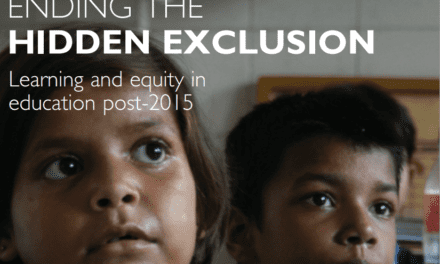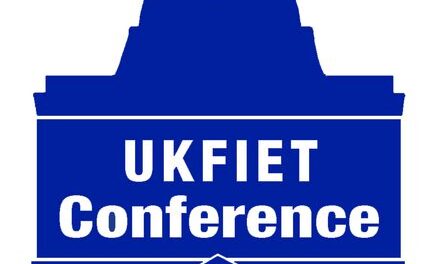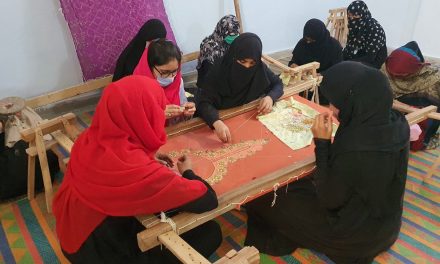 The most recent UKFIET-DfID discussion on Post-2015 goals for education, co-convened and hosted by ODI, well captured the richness of the challenges inherent in the larger project of getting education into the goals and sub-goals and protecting the far larger set of educational concerns that cannot be contained within these goals. However, I was struck by a sense of being partially alienated from the discussion through my interests in the skills issue. It is present in that a skills-related sub-goal now seems to be an accepted part of each of the range of drafts on offer; but I was the only one to raise any issues about these texts, and their language made little sense to me as someone with a skills interest.
The most recent UKFIET-DfID discussion on Post-2015 goals for education, co-convened and hosted by ODI, well captured the richness of the challenges inherent in the larger project of getting education into the goals and sub-goals and protecting the far larger set of educational concerns that cannot be contained within these goals. However, I was struck by a sense of being partially alienated from the discussion through my interests in the skills issue. It is present in that a skills-related sub-goal now seems to be an accepted part of each of the range of drafts on offer; but I was the only one to raise any issues about these texts, and their language made little sense to me as someone with a skills interest.
Where these are texts being written by educationalists, it seems that their horizons are those of the schoolroom and the Ministry of Education. Yet, for the vocational education and training community, the world is a complex one of public institutions (under various ministries and spanning all educational levels); private providers; non-formal provision and informal learning; and enterprise-based training in both the formal and informal economies. Not only are sites, modes and levels diverse, but structured vocational learning may be certificated or not, with these certificates being attached to programmes of a few hours or several years. Moreover, the variety of jobs, occupations and professions generates a rich banquet of distinctly flavoured approaches to learning and working.
None of this complexity seems to be informing the sub-goal discussion but this has resulted in a set of current proposals (HLP, OWG, GPE, UNESCO, GMR) that show fundamental tensions regarding what they think skills are and how they can be measured. I have space here to sketch out four problems that struck me as I read the latest iterations.
First, there is a tension regarding what skills are being thought about. EFA Goal 3 conflated life skills and vocational skills, leading to conceptual confusion that dogged the goal ever since. This was an educationalist-written text without meaningful input from a vocational skills community. Indeed, the problem perhaps has its roots in a failure to realise that putting these two notions together actually required drawing on two entirely different communities with different traditions of concerns, methodologies and disciplinary traditions.
Second, and crucially, this leads on to questions of what gets measured. There is a psychologically-grounded emphasis in the wider educational quality discussion (cf. PISA and LMTF) that approaches measurement from a view of identifying what learnings are valuable and then testing learners on these. However, the core vocational tradition is one of focusing on the skills that employers value and testing these in workplace settings. Whilst the two traditions can potentially come together to an extent around some notion of employability skills, the process of settling on an agreed set of such skills and their measurement is in its infancy. Moreover, this would still ignore the objection that this would prioritise decontextualised soft skills at the expense of more contextualised technical skills. What might end up being tested for would be important but certainly not a valid operationalisation of the full set of valuable skills.
Third, there is some tendency (most visible currently in the GPE proposals) to try to apply a schools logic of enrolments (including equity in this regard), completions (qualifications) or student:teacher ratios. These simply don’t make sense to a VET community. When I led a SADC regional exercise to establish VET indicators a few years ago, it became very clear that there was far too much diversity even within more mainstream provision to make these notions usable. Depending on definitions, for instance, the number of learners in VET in South Africa might vary from 200 000 (public further education and training college enrolments) to more than 10 million (workers who participated in some form of structured / purposeful workplace learning in a given year). Pass rates and student:teacher ratios are impossible to find, and the language of the latter took us the best part of an hour in the design workshop for the SADC study! Equity is clearly important (and stressed powerfully by UNESCO and ILO) but deciding on equity of what is far more challenging. Is it of access to formal programmes or to workplace training; or is it through training to equitable access to decent work?
Fourth, this latter point of the ultimate objective of a skills goal is also a point of confusion and contradiction. A life skills goal would point us towards skills for life in its broader sense. UNESCO talks in terms of skills for work and life. Yet, several of the texts on offer are about narrow and immediate employability, with the notion of NEET coming to the fore in the last year. But NEET is a problematic concept and subject to widely differing estimates even in its English heartland. It is not credible as a concept to be applied in many other settings. Nor is the narrow employability notion that lurks just behind it much better. It has been subjected to much wider and longer critiques and there are more progressive versions of the concept in the academic and policy literature, particularly in the EU. As I noted in an earlier blog, the notion of decent work appeared to be diluted in the HLP report and there are voices that claim it is too ambitious to be included in the post-2015 goals framework.
The Dakar formulations of the EFA goals were written months after UNESCO had convened the Second International VET Congress, but its findings do not seem to have influenced the EFA deliberations. 2012 saw the Third Congress but there is little sign that it is having any more influence on the schooling community. Some of the blame may lie with the VET community (assuming that they are not right to ignore the post-2015 process as peripheral to their interests) but it seems remarkable that the international education community is so neglectful of a part of the education system that speaks so powerfully to issues of disadvantage, poverty and economic development.





